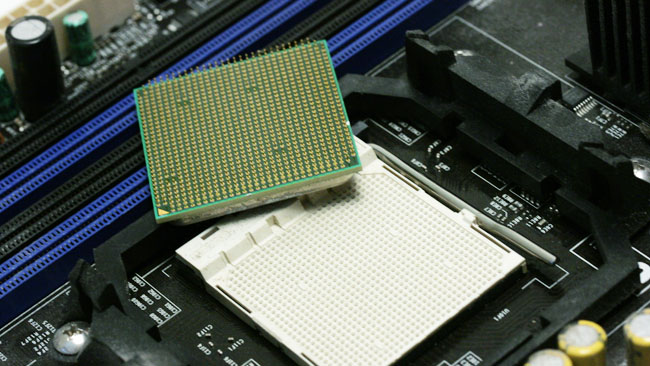
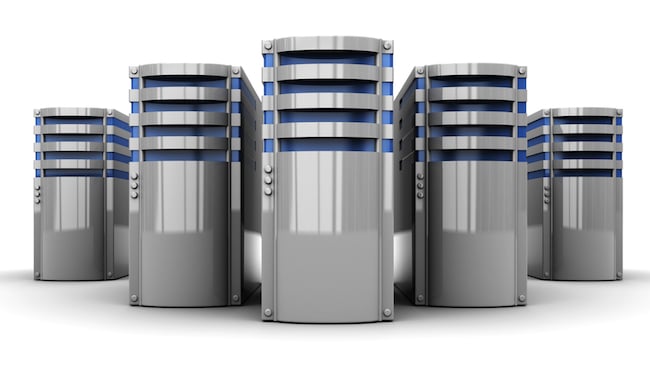 Build your own machine and you end up with exactly the specification that's required
Build your own machine and you end up with exactly the specification that's required
In a couple of recent articles, we've discussed ways to get the most computing horsepower for the money, comparing the specifications of various options and considering the expansion and upgrade options. To take that to its natural conclusion, it's not that difficult to build a workstation completely from scratch. Really.
Building your own workstation is not only generally the most price-competitive option, but it also lets you make the right choices about things which nobody usually thinks about. For instance, probably the most common failure in off-the-shelf PCs is the power supply, which can easily destroy every other component in the machine, and all the data, if it fails. The power supply, however, is rarely mentioned on the shelf-edge sticker at a showroom.
The absolute best thing about a custom build, though, is the configurability; the ability to build a machine to exactly the specification that's required. Doing that requires we understand a bit about the specifications of each component, but we also need to know how to find parts that'll fit together. This is less scary than it seems, since generally if things fit in a slot they'll work.
CPU
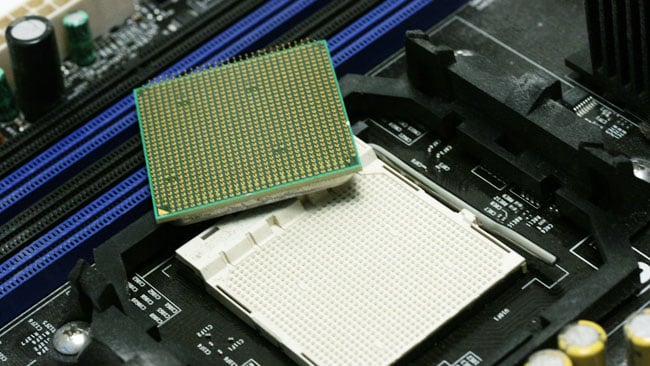
The CPU (shown upside down, revealing the pins) must fit the socket on the motherboard
CPU specification is the go-to measure of a workstation's performance. Even in modern workflows, where a lot of the heaviest lifting is offloaded to a graphics card, CPUs are often kept quite busy decoding video and running the rest of the system. Nobody ever complained that the CPU was too good.
Principal measures of performance include obvious things like clock speed and the number of cores, but figuring out what each core can do per clock cycle requires a bit more information. The i-series numbering on Intel's CPUs serves to collect them into broad capability groups. Things beginning i7, for instance, typically have hyper-threading, which is how Intel describe the ability to handle more than one stream of instructions per core to ensure that the core is kept busy even when it's waiting for information from other parts of the system. CPUs also have a couple of levels of cache memory, which is used as a sort of quick reference area to store data that's likely to be quickly needed again. Video workflows, which pump lots of picture data through the CPU, can often make good use of this.
Intel's top-of-the-range Xeon line tends to include all of the available bells and whistles, and can often work together in groups for more total cores, though they may be clocked slightly slower to keep overall power consumption down. If in doubt, you can compare individual CPUs on a website such as CPUBoss, to figure out the best compromise.
CPU compatibility is expressed in terms of the type of socket on the motherboard; current Core i7 7000-series chips use Socket 1151, for instance (the number refers to the pin count). In rare circumstances, particularly old motherboards may not be able to run particularly recent CPUs of the same socket, but Google will generally answer these questions.
Motherboard
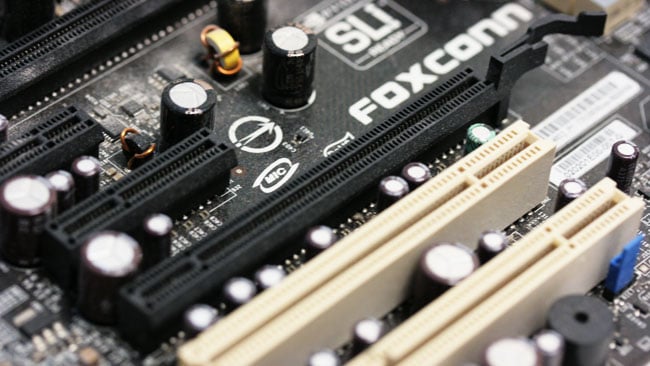
Motherboards break down broadly into smaller types for domestic computers and larger ones for big workstations. Both are useful
The motherboard, as the name suggests, is the basis of the system into which more or less everything else plugs. It needs to have a socket compatible with the desired CPU, and effectively all of them have additional features such as hard disk controllers.
Motherboards intended for consumer PCs tend to have built-in sound which is probably good enough for basic stereo monitoring, USB and other ports, and a controller for SATA disks. The RAID controllers are often very basic and should really only be used to control single disks, for RAID0, 1 or 10; they may be able to create RAID5 arrays, but the performance may be poor. Motherboards intended for Xeon CPUs may have much better RAID controllers, though they may require expensive SAS disks. They will typically have at least enough SATA ports to support a conventional startup disk (of which more under storage) but may entirely lack things like sound and USB-3, which you can add as a plug-in PCI Express (PCIe) card. Check that the motherboard supports a revision of PCIe that will allow any expansion cards (a disk controller, perhaps, or SDI board) to work at full potential.
Some motherboards have lots and lots of things built in, up to and including graphics capability (which may itself be part of some CPUs.) This is often absolutely fine for office work, and performance of onboard graphics has improved a lot recently, though it might not be suitable for particularly advanced video editing.
Crucially, the motherboard also has room to take...
RAM
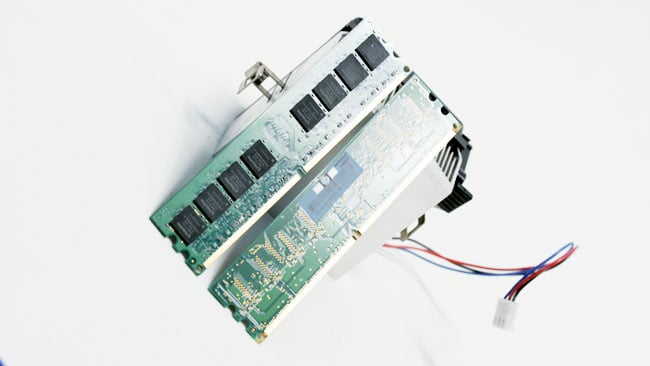
Memory comes in modules. Often, they're used in pairs or triples
Memory has long been the second item listed in a computer's specification, and it's fairly straightforward: get as much as the motherboard and operating system will support, in a type the motherboard supports. It isn't outrageously expensive and more is more. RAM comes in speed grades, but beyond a certain point, faster RAM tends not to produce easily-detectable performance gains, so don't pay a huge premium for the very fastest stuff.
At the time of writing, there were a few current types: various revisions of DDR RAM, used in consumer machines, and the “buffered,” or ECC, type used in more industrial installations with Xeon processors. It's usually simple to discover and purchase the right stuff. Sometimes ECC and non-ECC RAM will fit the same slots, which is a rare example of things fitting but not working; usually, things that don't work won't slot in (and nothing will be damaged even in this case.)
Storage
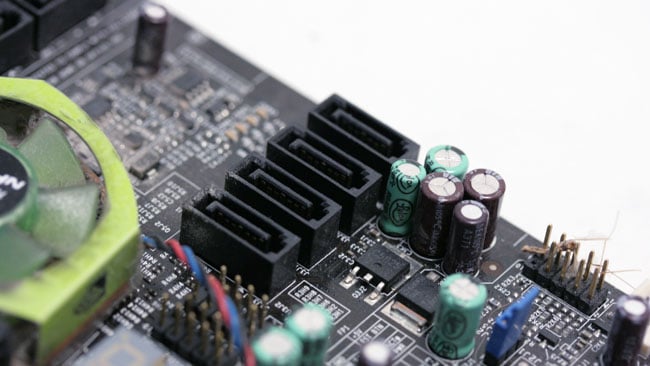
These are SATA ports, of which modern motherboards tend to have at least six
Storage for video workstations breaks down into two areas. First, there's the boot disk, so called because it contains the software (windows, linux) which the computer uses to start up, and the applications. This is usually a solid-state disk, which is fast but expensive, and generally too small to contain bulk video data. The counterpart is usually a big disk array made out of conventional spinning disks.
Boot disks are usually SATA or M.2 format; SATA connects up like a conventional hard disk, whereas M.2 is a plug-in module that sits on the motherboard. Disks in the array – at least two, as many as 16 or more – are simpler. They'll be conventional 3.5” hard disks, though look for types which run at 7200rpm or faster, for better performance. 5200rpm options are cheaper and run cooler but suffer reduced performance. Size is a cost issue: at the time of writing, disks of two terabyte capacity were fairly normal. Read up on disk arrays here before making any decisions, and check the revisions of storage standards supported by disks and controllers, to be sure everything is running as fast as it can.
Graphics
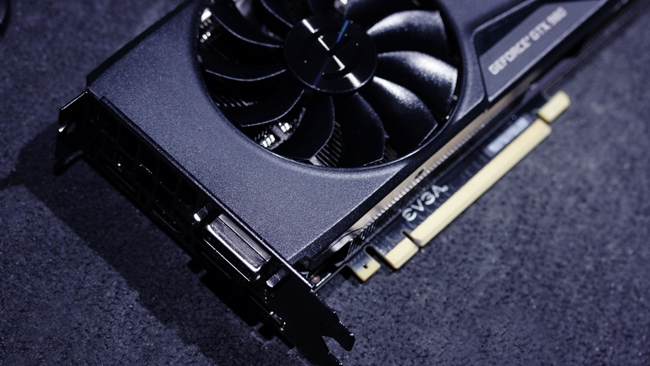
Graphics cards fit in PCIe slots. Anywhere it will fit will work, but it's usually better placed in the slot closest to the CPU
Graphics cards are a widely-misunderstood thing. Unless the software you're using specifically advertises GPU acceleration, it's likely that a basic graphics card is fine; you do not necessarily need a great graphics card just to display video, and much less if you're building an unattended processing box such as might be used to render 3D graphics sequences or proxy videos.
Many modern workflows will, however, need some sort of GPU capability. Commercially-made workstations tend to use Nvidia's Quadro series boards, but there's really very little need to go to those lengths outside the world of high-end computer-aided design. The company's GTX series of cards, intended for gamers, do a very solid job as we found here [https://www.redsharknews.com/post/item/2239-red-shark-review-nvidia-geforce-gtx-980-titan-black], a few years ago. The modern 1000-series cards are somewhat more powerful, although the GTX 1060 is broadly equivalent in power to the 980 we tested in 2014. It handled many tasks in Resolve quite capably. Comparing graphics cards is difficult because they have differing clock speeds, internal data path capacity, number of sub-processors, and so on, but the website at GPUBoss.com can provide point by point comparisons of popular types. More RAM is often useful for video work.
Compatibility concerns include the revision of PCIe slot that's present on the motherboard. Mismatches should work but may impact performance. The only other concern is whether the board of your choice has the right outputs to drive your monitor. Common options include DVI or DisplayPort, with some tricky issues with the combination of maximum resolution and framerate supported by various DVI revisions.
Some software – Resolve, for instance – recommends having two graphics cards, one for display and one for calculations. These need not be two identical boards (as in the arguably mis-specified Mac Pro), and the display board can be quite basic, without a particularly powerful core or lots of memory. Interactive performance often improves with a dual board configuration, which matters for grading.
Ancillaries
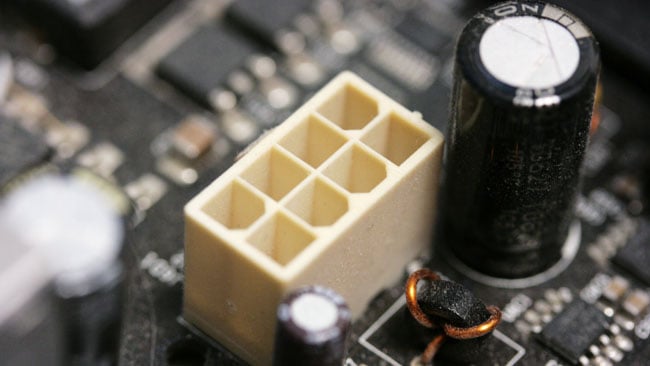
Most motherboards and graphics cards need extra power, supplied by sockets roughly like this. The power supply must have appropriate connectors
Ancillary parts for custom workstation builds include things like the power supply and case.
There are power calculators online which will take a list of parts and give a rough idea of power consumption. Specify a power supply with a significant (at least 50%) safety margin, and do not go cheap: power supply faults can destroy the entire machine, and cheap ones tend to be noisy. Compatibility concerns, beyond sheer capacity, include the power connectors required to patch up to the motherboard, drives and graphics card, all of which are likely to require specific connector types. It's often necessary to go through the specifications and make a list of required types; splitters and adaptors are available to help solve problems, and “modular” power supplies tend to have plug-in cables to create the most useful configuration.
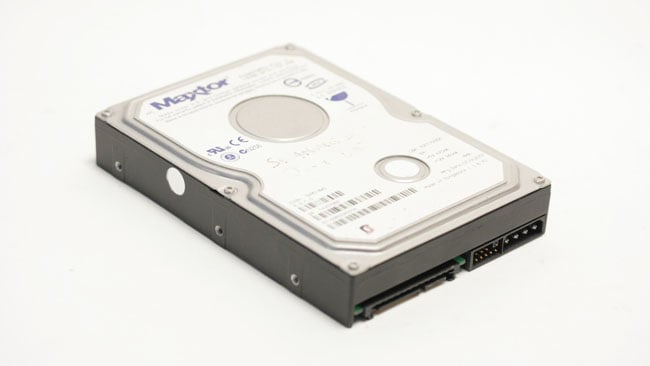
Despite advances in flash storage, bulk disk space for large video files typically uses disks like this one. Many cases include hot-swap bays for certain types of disk
Many workstations will be built into rack-mounting cases, especially if there's a need for a lot of disks. They're easily found, can be dropped into flight cases for easy transport, and the only compatibility issues are ones of sheer space. Big motherboards for multiple-CPU configurations will need more space; the hole patterns to bolt the motherboard into the case are standardised, so check the case supports the motherboard type you're intending to use. The only other concern is cooling: there are tools available which allow you to monitor the various temperature sensors in a modern system, and evaluate how everything's going. Most commercial rack cases are designed for server farms, where cooling is everything and noise is not a big problem, so for an office environment it's sometimes necessary to ditch the supplied fans and CPU heatsinks and replace them with better, quieter ones (brands such as Noctua are good for this – see www.quietpc.com.)
And finally
The biggest advantage of all this is that generally, it's very difficult to mess up: if things fit in certain slots, they'll generally work. CPU, RAM and motherboard are easily associated, and everything else (storage, graphics, etc) tends to be compatible with any CPU setup. Perhaps the biggest advantage of a custom build, though, is the after care. What after care? Well, if it breaks, you know how it was built, and you can probably fix it on the spot, very possibly using commodity parts form a local store.
Which is hard to beat.
Tags: Technology



Comments